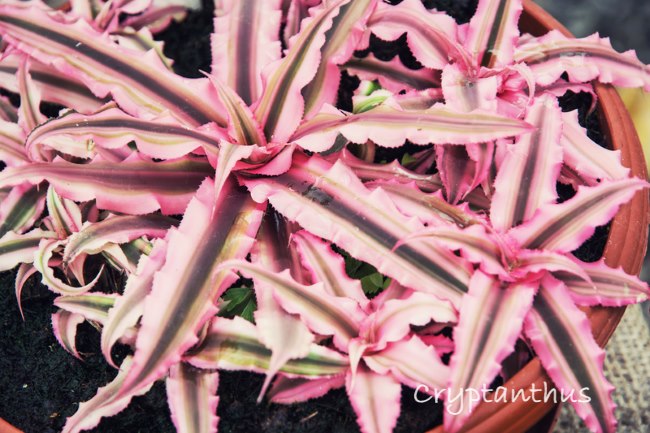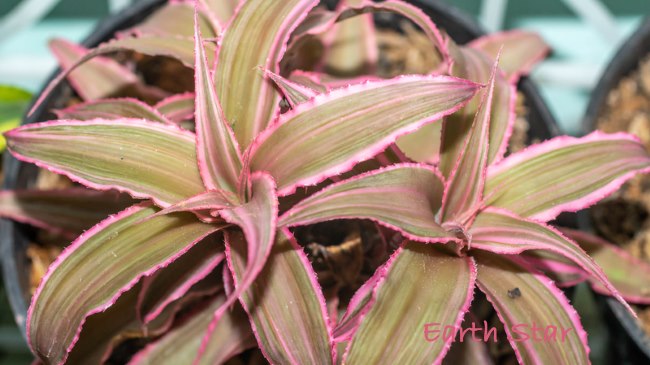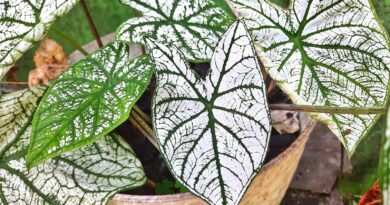How to Grow this Showy Bromeliad Indoors
Botanical Name: Cryptanthus hybrids
Colorfully patterned rosettes make Cryptanthus Earth Star a must-have for your houseplant collection.
 Vibrant pink Earth Stars are captivating potted together. Photo ©Vrabelpeter1
Vibrant pink Earth Stars are captivating potted together. Photo ©Vrabelpeter1In their native Brazilian habitat, Cryptanthus Earth Stars are terrestrials, growing on the rain forest floor as stemless rosettes of narrow leaves with crinkly, spiny edges.
This ground-hugging tropical is a tender, evergreen perennial, preferring the same warm temps we do, making it easy to please indoors.
Small, young plants will thrive in a terrarium, bathed in humidity and indirect sunlight. While some varieties stay fairly small, spreading to 6-in (15 cm) wide, others grow to 14-in (35 cm) wide, and may need to eventually be removed and potted separately.
 Exotic ‘Pink Starlite’ gives any room plenty of drama. Photo ©Hilmawan Nurhatmadi
Exotic ‘Pink Starlite’ gives any room plenty of drama. Photo ©Hilmawan NurhatmadiIt’s easy to see why Cryptanthus Earth Stars are growing in popularity. Colorful hybrids are attractive on their own, or alongside other humidity-loving tropical houseplants.
Keep them happy and you’ll enjoy them a long time. Earth Stars live up to 10 years — longer than most Bromeliads. And you’ll love this — you can propagate the “pups” that grow around the parent plant for an ongoing collection.
Cryptanthus Problems, Solutions and Answers
Wondering when to repot? Repot in spring every couple years, mostly to give Cryptanthus fresh potting medium, which becomes compact over time. This Bromeliad has shallow roots and likes to be pot-bound, so move it up to a pot only 1-inch (2.5 cm) larger when necessary. This is a good time to remove offsets and pot them separately to give the plants more room to spread out. Use a pot with drainage holes to prevent soggy potting medium, which can lead to root rot. Because Earth Star has shallow roots, a broad, shallow pot will do.
Dull, pale leaves aren’t getting enough light. Move your plant closer to a window, but keep it out of hot, direct sun, which can scorch its leaves.
Brown, shriveled leaves are a symptom of dry air or dry potting medium. Rooms can become extremely dry during the winter months — you may need to raise the humidity near your plant. See “Humidity” tips below.
Is Cryptanthus poisonous? No, its non-toxic to people, cats, and dogs.
Do Cryptanthus Earth Stars bloom? Yes, they do. Small, 5-lobed flowers are typically white and will bloom on mature plants. However, the flowers are small and hidden among the foliage, and hardly noticeable. It’s the dazzling patterned leaves that are the attraction.
Cryptanthus Varieties
Cryptanthus is a genus that includes about 20 species. New cultivars are being introduced, offering exhilarating color combinations and patterns.
Most popular varieties of Earth Star feature pink or red stripes down its otherwise green leaves. ‘Red Star’ and ‘Pink Starlite’ are among my favorites.
Cryptanthus Earth Star Care
Origin: Brazil
Height: About 6 in (15 cm)
Light: You’ll get the best leaf color by keeping this houseplant in a bright location, out of direct sun. Strong sun exposure can cause brown spots on leaves. Don’t have a place for your Earth Star near a window? Set it under an indoor plant light. Keep the light about 6-10 inches (15-25 cm) above the plant for about 12 hours a day.
Water: Aim to keep the roots lightly moist in spring and summer, but not soggy. Cryptanthus is stemless and has shallow roots, making it prone to rot if the potting medium is kept wet. Water sparingly in fall and winter, when growth is slower, but don’t allow roots to dry out completely. Bromes are sensitive to the chlorine and fluoride in tap water. Use distilled water or rainwater and allow it to warm up to room-temperature first. Houseplants hate cold water!
Humidity: Earth Stars want higher-than-average humidity. Try to maintain at least 50% relative humidity near your plant; the most efficient way to do this is to set your plant on a humidity tray or use a cool-mist room humidifier.
Temperature: Average to warm (65-80°F/18-27°C). Cryptanthus Earth Star will tolerate a minimum of 60°F/16°C. Keep your plant out of cold blasts from windows and doors during the winter. Also shield it from heat/AC vents.
Soil: Bromeliad or orchid potting mix
Fertilizer: Feed monthly spring through summer with a balanced water-soluble fertilizer. Or mist the leaves with a weak foliar fertilizer once a month.
Propagation: Cut off the offsets (pups) when they reach 3 in (7.5 cm) tall and plant them in fresh, barely moist potting mix. Maintain high humidity for the pups for the first month.




